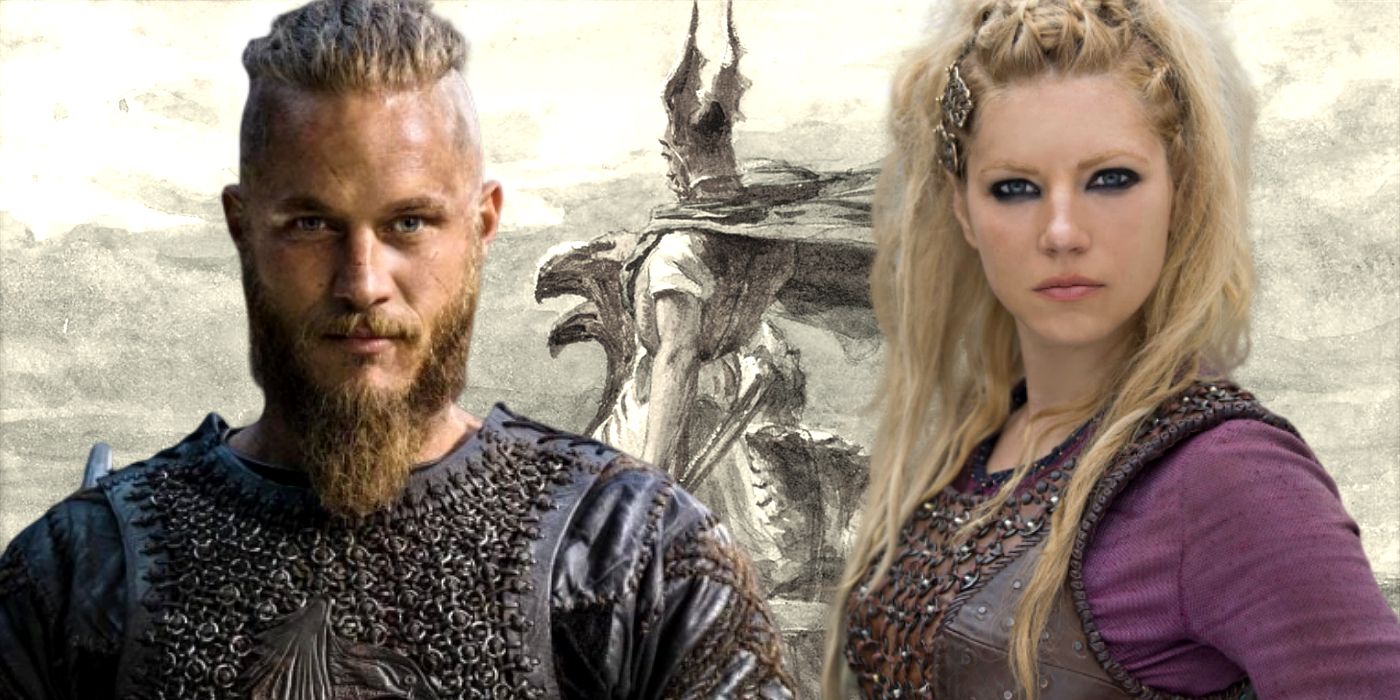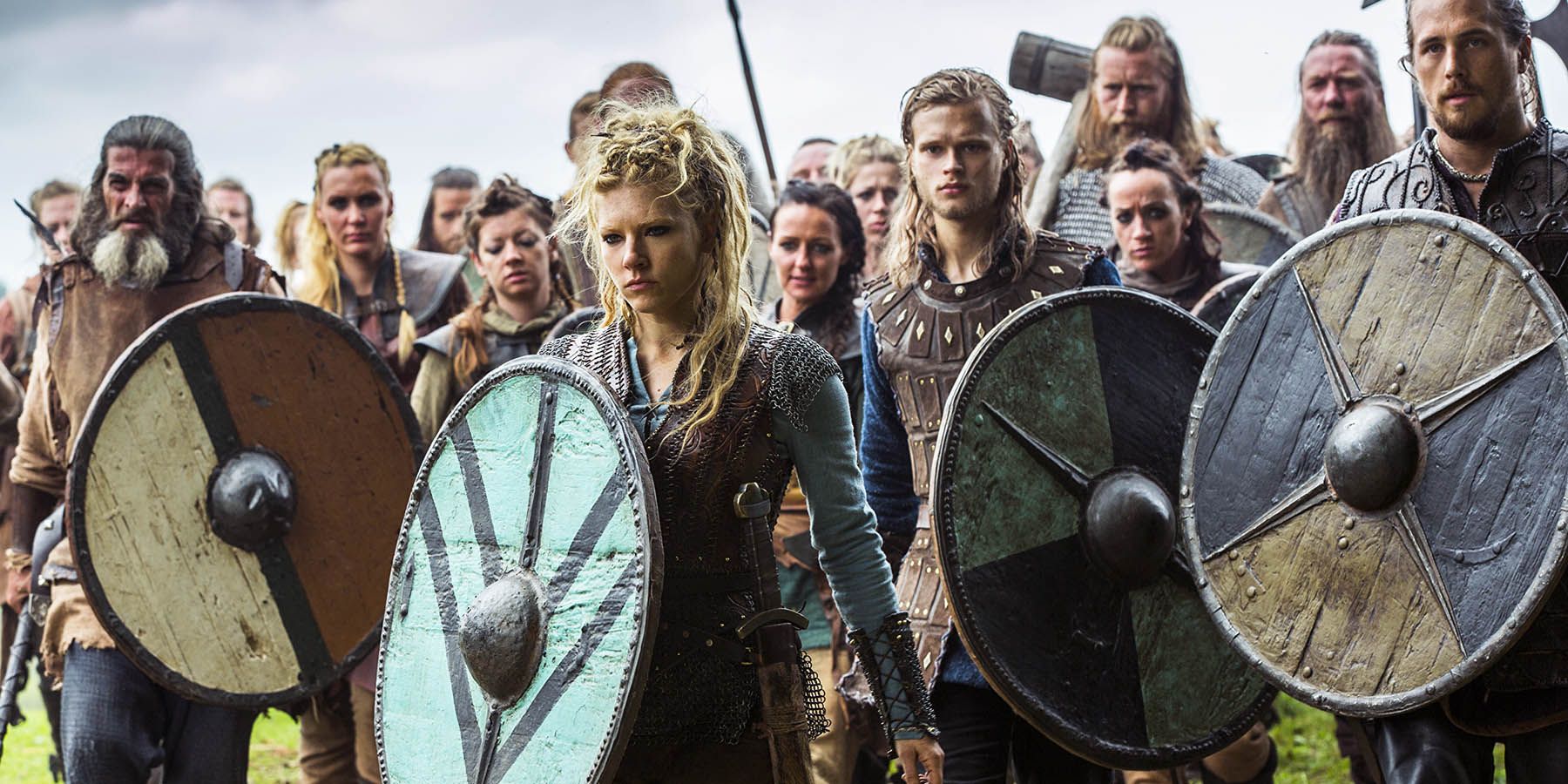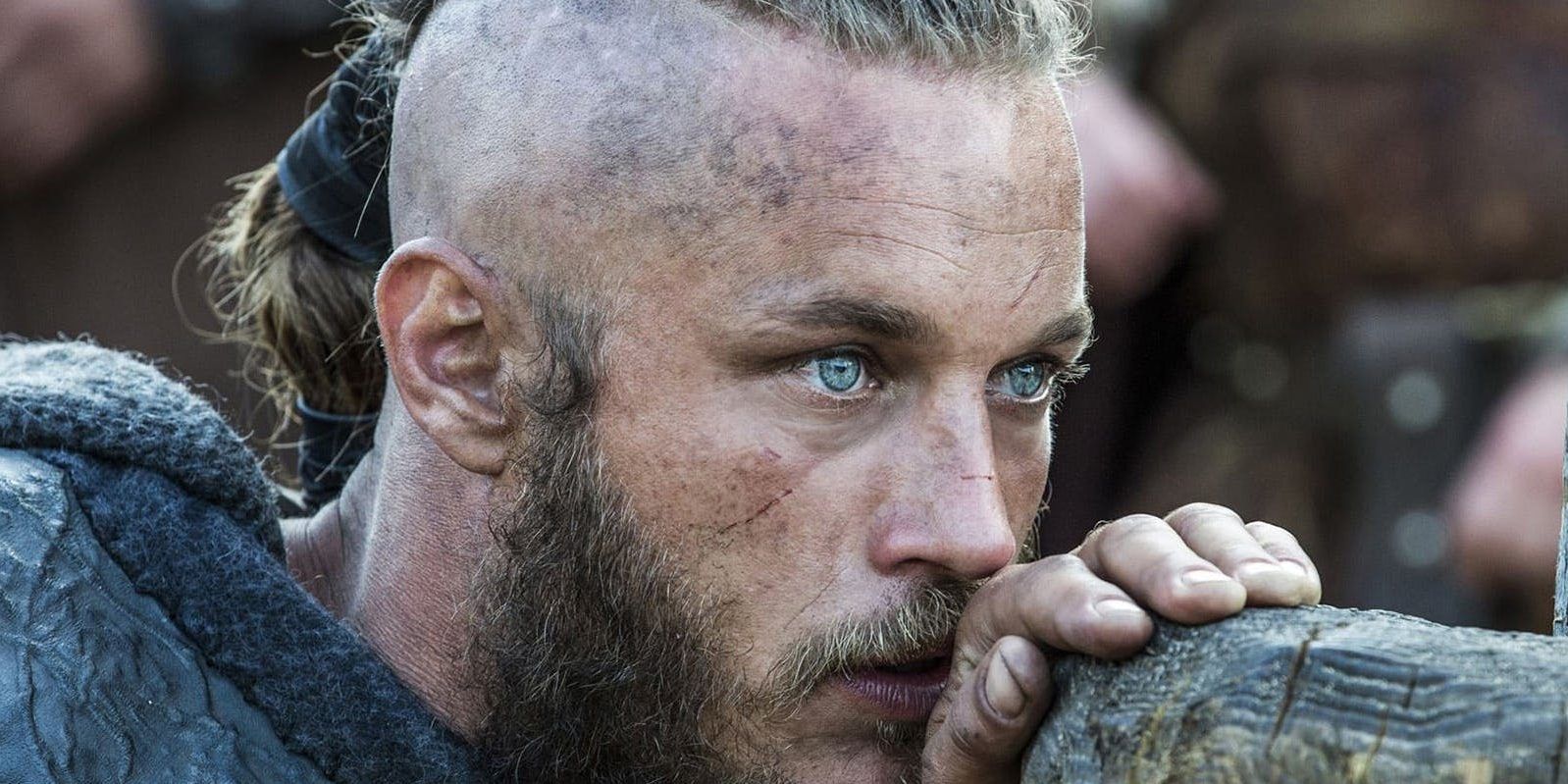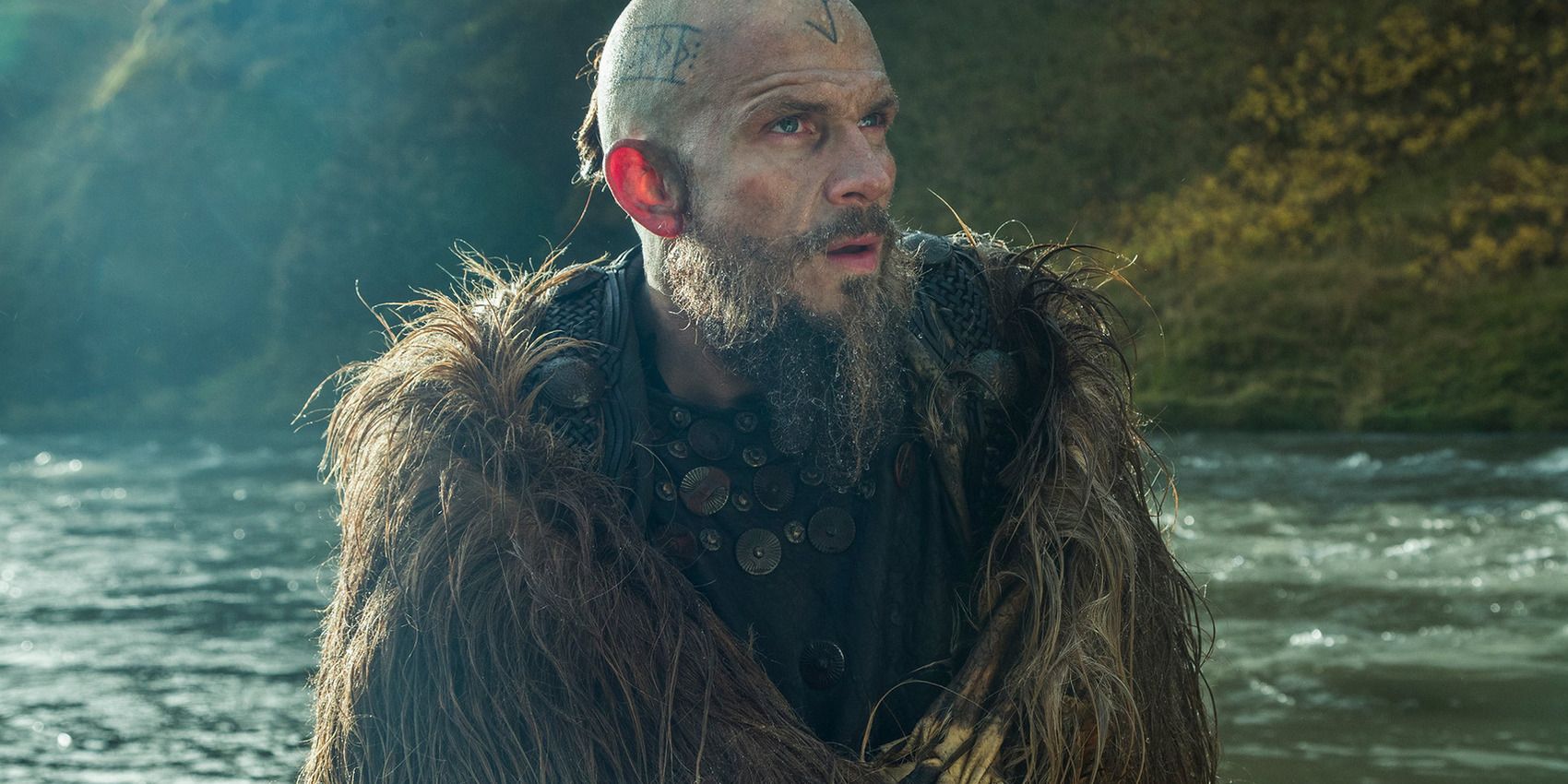History Channel’s Vikings has drawn the attention of the audience for its depiction of Viking warriors, their society, and their merciless battles and raids, but how much of it was real? Although it is not a documentary or educational series, it’s inevitable for viewers to ask how much of Vikings is historically accurate and how much was made up just for the series. Truth is, the series takes from both historical records and fiction to keep the story moving.
Vikings was created by Michael Hirst (who also created The Tudors) and premiered in 2013. The series initially followed the adventures and raids of the legendary Ragnar Lothbrok (Travis Fimmel) and his Viking brothers, from the start of the Viking Age (marked by the Lindisfarne raid, as seen in season 1) onwards. The subsequent seasons have focused more on his sons and their own travels, more so after Ragnar’s death in season 4.
Vikings is now preparing for its sixth and final season, with Ragnar’s sons Bjorn and Ivar pitted against one another for the future of Norway, promising as much action, drama, and blood as in previous seasons. With the end fast approaching, it’s a good time to explore the true story behind Vikings. Here’s what inspired the series, the truth behind one of its most popular characters, and how much the series adapted history.
The Real Mythology Behind Vikings
Vikings takes inspiration from the Norse sagas, stories about voyages and battles written in the 13th century. Ragnar Lothbrok is a prominent figure in these, with his own sagas and tales recounting his life and travels. According to these, he was a fearsome warrior and raider, mostly known as the leader of the Viking Siege of Paris in 845. Although Ragnar was the character that pretty much kickstarted the series, Vikings is not exclusively about Ragnar – it also explores other sides of the lives of Vikings, as well as other characters from sagas and legends.
As seen in the series, Vikings had advanced sailing and navigational skills, their own social structure (divided in three: Thralls, who were slaves; Karls, free peasants; and Jarls, the aristocracy), and believed in Norse religion. Vikings believed that after battle, Odin walked around the battlefield and chose those who would return with him to Valhalla, the place where warriors went to after they died. In Old Norse texts, Odin is described as being often accompanied by his animal companions and familiars: two wolves (Geri and Freki) and two ravens (Huginn and Muninn). Vikings also believed the Gods had shape-shifting abilities, and could appear as a raven, owl, or wolf, hence why the series sometimes had a raven that appeared to Ragnar, as he was said to be a descendant of Odin.
Vikings were more than just savages who killed all of those who dared stand in their way during battles and raids. Although they were a non-literate culture, they had the “runor” alphabet and described their world (and themselves) on runestones, women were more free than in other cultures, and their engineering skills were outstanding. Of course, the brutality of their battles is a much more appealing side to many, so the series couldn’t leave that behind, but it did its best to depict much more of the culture of Vikings than just bloodfests.
Was Ragnar Lothbrok A Real Person?
Because the Vikings themselves didn’t leave any written records of their travels, and the ones that exist came years later from other cultures that were in contact with them, Ragnar Lothbrok’s existence is unclear. Hirst has shared that, after the research he did for the show, he concluded that Ragnar did exist, as his name appears in several accounts. However, sources are unreliable (the Saga of Ragnar Lothbrok has him slaying a dragon), and while it’s possible that there was a man under the name Ragnar Lothbrok, the Viking warrior as he’s known is most likely a combination of different figures with a dash of fiction to add to the drama of the legend.
Ragnar is believed to have been based on Viking leader Reginherus, known for the Siege of Paris in 845; King Horik I of Denmark, who actually appears in the series; and King Reginfrid, who ruled part of Denmark and came into conflict with Harald Klak, predecessor of Horik. Some academics believe the Ragnall of the Irish Annals could also be connected to the figure of Ragnar Lothbrok. As such, the veracity of many aspects of his life depicted in the sagas and other sources is unclear, although one thing is for sure: Rollo, presented in the series as his brother, had no relation to Ragnar Lothbrok, but there are suggestions that he participated in (and possibly led) the Siege of Paris, though the one in 885.
What The Vikings TV Show Changes & Adds
The history of the Vikings is very rich, but it might not have enough dramatic, fantastical, and exciting elements and events to adapt it as it is into a TV series. Naturally, Hirst and company took many liberties when it comes to the characters and events shown in Vikings. Real or not, the series is based on what the sagas and other sources have to say about the figure of Ragnar Lothbrok, but some changes had to be made in order to extend his arc to more than one season. According to the saga, Ragnar was first married to noblewoman Thóra Borgarhjǫrtr, but according to Saxo Grammaticus’ Gesta Danorum, his first wife was shieldmaiden Lagertha, as in the series. Lagertha is mentioned in the Saga of Ragnar Lothbrok, but she was never an earl and wasn’t the mother of Bjorn Ironside. However, she was an Amazon warrior, as depicted in the series. Ragnar later married Norse queen Aslaug, mother of his sons (including Bjorn). Many of Ragnar’s relationships, travels, and actions were taken from other figures, such as his fake death in season 3, which was an often used move by Viking chief Hastein.
The raids, especially those on Paris, went through some major changes too, with the series combining the raid in 845 with the one in 885-886. Speaking of raids, Athelstan is a fictional character as there’s no record of a Christian monk kidnapped by the Vikings (let alone one that became Ragnar Lothbrok’s best friend). However, there was an Athelstan around that time, and it was the grandson of Alfred the Great. One of the most beloved characters from the series, Floki (played by Gustaf Skarsgård), is based on the historical figure Floki Vilgerson, who founded Iceland, but Vikings’ Floki is mostly fictional.
The village of Kattegat is also fictional, as the real Kattegat is a sea between Denmark and Sweden, and there’s no record of a Scandinavian village with that name. Many other characters, although actual historical figures, relied more on fiction than facts, such as Aethelwulf of Wessex, Alfred the Great, Charles the Simple, Aslaug, Bjorn Ironside, King Horik, Rollo, and more. Ivar the Boneless, however, is portrayed accurately for the most part, although his actions in Britain are a combination of different battles – and he didn’t kill his brother, Sigurd.
Because Vikings is a series made for entertainment purposes and not to educate, the creative team can take as many liberties as necessary to better tell the stories they want, with characters that might have existed or not. The series has managed to spark the curiosity of viewers and get them interested in the culture of Vikings and other historical figures, just like The Tudors did during its time, and that might be the most valuable part of its legacy.




